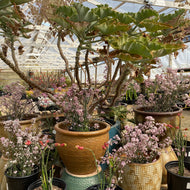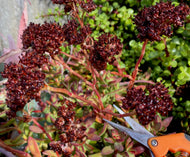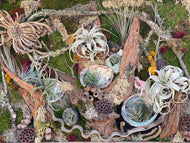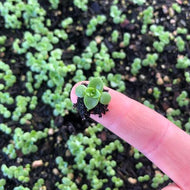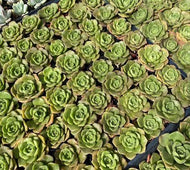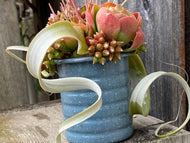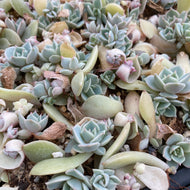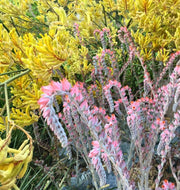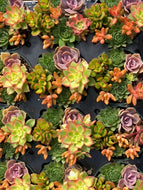Our food supply in this world depends on pollinators. It's important that we plant diverse gardens that can attract a diversity of pollinators, from bees and hummingbirds to the more maligned, but equally important flies, bats and moths to encourage and support this pollinator population.

Succulents are often overlooked in the garden as pollinator-friendly plants. Other plants like milkweed, butterfly bush, teucrium, and lavender, are better known as pollinators. Though there is nothing wrong with these other plants, in a drought-stricken California, it is important that we keep our water usage low, and as everyone knows succulents are extremely drought-tolerant.

Here are some of the best pollinator succulent plants to incorporate into your edible gardens.
Hummingbirds
Aloe plicatilis, Aloe ‘Delta Lights’, Aloe striata, Echeveria ‘Etna’, Echeveria pulodonis
Bees
Sedum rupestre ‘Angelina’, Crassula falcate, Delosperma nubigenum, Mesembryanthemums
Butterflies
Sedum ‘Autumn Joy’, Crassula falcate, Calandrinia spectabilis, Senecio mandraliscae
Flies
Stapelia hirsute, Orbea variegate, Huernia
Moths and Bats
Night-blooming cacti, Epiphyllum (all species), Yucca rostrata
Pesticide Use
Like all plants, succulents are vulnerable to insect pests. Aphids and mealybugs being the primary offenders. If our goal is to use succulents to attract pollinators, we need to practice Integrative Pest Management in order to limit the amount of pesticides we use.
Preventing harmful insects from gaining a foothold is the best approach, though can often be easier said than done. Greenhouses tend to be the worst breeding grounds for harmful pests. Keeping the garden clear of fallen leaf debris, not overcrowding succulents, and maintaining good air circulation are all important steps. Aphids can be killed with milder horticultural soaps. Mealybug can be spot dabbed with rubbing alcohol. If you're experiencing bigger infestations of mealybugs, you’re better off just discarding the plant(s). Systemics should only be used as a last resort.

